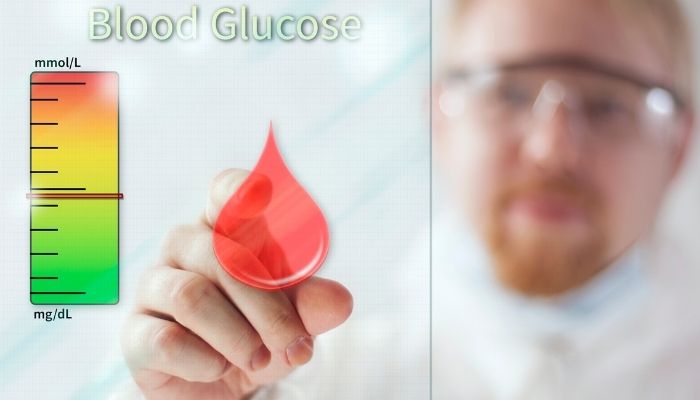Normal blood sugar or glucose levels for adults who are not suffering from diabetes are between 90 mg/dL to 110 mg/dL. Blood sugar levels can be defined as the amount of glucose or sugar that someone has in their blood at any given time. It should be noted that having high or low blood sugar levels can lead to serious health conditions, which would require medical attention. This is why it is important to understand what the normal blood sugar level is. And today, we’ll help you with just that.
Normal Blood Sugar Levels for Adults
Blood sugar levels can be categorized as being normal, high, or low. This categorization will depend on how much glucose, which is a type of simple sugar that is present in the bloodstream at all times, or sugar is present in the bloodstream of an individual.Normal blood sugar levels can be measured after an individual fasts, eats, or after they have just eaten. The normal blood sugar level for an adult who is not suffering from diabetes and has not eaten anything for the last eight hours, which can be looked at as fasting, is less than 100 mg/dL.

Further, the normal blood sugar level for an adult who is not suffering from diabetes and has only eaten two hours ago is between 90 mg/dL to 110 mg/dL. One should note that there are several factors that can affect blood sugar levels throughout the day. Some of these factors are:
12 Factors that can affect blood sugar levels
- Type of food consumed
- Amount of food consumed
- The time during which the food was consumed
- Amount of physical activity
- Consumption of medications
- Any existing medical conditions
- Age of the individual
- Level of stress experienced
- Dehydration
- Illness
- Menstrual periods
- Consumption of alcohol
Also Read: Health Tips to Manage Blood Sugar For Diabetes Patients
Normal Blood Sugar Level Chart By Age for Adults
As mentioned above, depending on the age of the individual, the normal blood sugar levels can change. In this section, we will learn about those blood sugar levels. Let’s first start by looking at the normal blood sugar levels of children younger than 6 years old. Those normal blood sugar levels are depicted in the table below.| Fasting | 80 mg/dL to 180 mg/dL |
| Before Meal | 100 mg/dL to 180 mg/dL |
| 1-2 Hours after Eating | Around 180 mg/dL |
| Bedtime | 110 mg/dL to 200 mg/dL |
| Fasting | 80 mg/dL to 180 mg/dL |
| Before Meal | 90 mg/dL to 180 mg/dL |
| 1-2 Hours after Eating | Up to 140 mg/dL |
| Bedtime | 100 mg/dL to 180 mg/dL |
| Fasting | 70 mg/dL to 150 mg/dL |
| Before Meal | 90 mg/dL to 130 mg/dL |
| 1-2 Hours after Eating | Up to 140 mg/dL |
| Bedtime | 90 mg/dL to 150 mg/dL |
| Fasting | Less than 100 mg/dL |
| Before Meal | 70 mg/dL to 130 mg/dL |
| 1-2 Hours after Eating | Less than 180 mg/dL |
| Bedtime | 100 mg/dL to 140 mg/dL |
9 Common Symptoms of Low Blood Sugar
Hypoglycemia is defined as a condition in which the blood sugar levels drop too low. There are a number of reasons why one might suffer from this condition, including:- Types of diabetes
- Certain medications
- Alcohol
- Endocrine disorders
- Eating disorders
- Pregnancy
- Disorders of the liver
- Kidney problems
- Problems related to the heart
- Dizziness
- Confusion
- Irritability
- Lightheadedness
- Shakiness
- Chills
- Anxiety
- Nervousness
- Clamminess
- Having a fast heart rate
- Hunger
- Pale skin
- Fainting
- Tingling lips
- Sleepiness
Once the blood sugar level is back in the target range, then an individual can have a snack or a meal to make sure that the blood sugar level does not drop again. Apart from this, one can have a healthy diet, take prescribed diabetes medication, and use a glucagon kit in emergencies.
5 Symptoms of High Blood Sugar
Hyperglycemia can be defined as a condition with high blood sugar. This condition arises when the body does not have enough insulin or is unable to use insulin correctly. Some reasons due to which one might suffer from hyperglycemia are:- Type 1 diabetes
- Type 2 diabetes
- Stress
- Illness
- Dawn phenomenon
- Fatigue
- Frequent urination
- Blurred vision
- Headaches
- Increased thirst
- Weight loss
- Difficulty in concentrating
- Eat whole and low sugar foods that are minimally processed
- Only exercise if there are no ketones present in the bloodstream
- Drink lots of water to help the body get rid of sugar in the urine
- Adjust your insulin levels
- Take medications according to the recommendation of your healthcare provider


